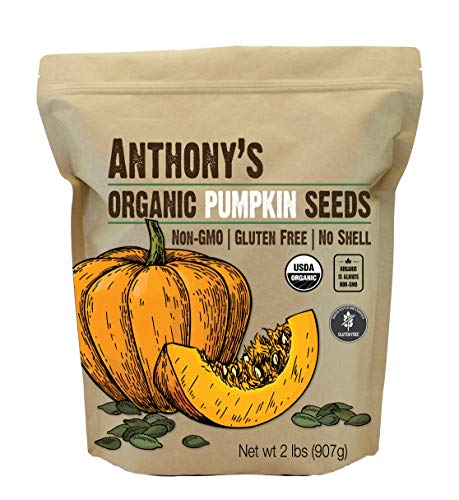Magnesium is very important, but also very under-consumed.
Many people in North America do not get enough magnesium in their diet.
This is largely because the foods highest in magnesium, which are also among the most nutritious, are often under-consumed or underappreciated.
The magnesium issue is potentially also made worse by other factors.
Things we can modify like how we cook vegetables (boiling = magnesium loss), smoking/drinking (may affect magnesium status), and adequate Vitamin D status (may enhance absorption) have a role to play.
So too do factors we can’t control as easily, such as changes to the content in the soil used to grow our food (which may be decreasing in magnesium content).
These realities in tandem have meant that magnesium supplementation has grown to become a topic of significant public interest.
I only need to look as far as Amazon Canada’s top-selling supplement list to see the first page contains five different magnesium-containing products.
The Commonly Sold Magnesium Supplements
Magnesium supplements come in many different forms, the most common of which include:
Generally oxide is commonly sold at doses around 500mg whereas citrate and glycinate, owing to better bioavailability, are sold at doses closer to 150-250mg.
Ultimately the type that is best for any given person will depend on their individual characteristics and motivation for use – speak with your healthcare provider if you feel compelled to act on what you are about to learn next.
Making Sense Of Magnesium – When Does Supplementation Make Sense?
If you are otherwise healthy but concerned about your magnesium intake, my best recommendation is to zoom towards the end of the article where I teach you how to optimize your magnesium consumption through diet.
In other words – not everyone needs a magnesium supplement.
If, however, you suffer from one of the ailments listed below and/or are currently not in a position to make significant changes to your dietary pattern – we may have something to discuss.
Magnesium For High Blood Pressure
High blood pressure is a leading risk factor for heart disease and among the most common reasons why someone in North America is prescribed medication.
Although blood pressure lowering via diet is usually associated with potassium, we must not forget that magnesium (as part of the DASH diet) also has a role to play.
In fact, the FDA just qualified a claim relating to magnesium intake and hypertension risk.
Meta-analysis data out of the Hypertension journal determined that Mg supplementation at an average dose of 368 mg/day over a ~3-month period lowered systolic and diastolic blood pressure by an average of just under 2 points each with magnesium oxide being the primary form used.
Magnesium As An Anti-Inflammatory Compound
As per the Dietary Inflammatory Index [DII] magnesium is considered a strongly anti-inflammatory mineral and its supplementation has been demonstrated to significantly decrease meaningful inflammatory markers like CRP (C reactive protein), among others based on meta-analysis data.
Magnesium oxide and citrate in doses between 250-500 mg over a minimum 8-week period were used in the majority of studies reviewed.
Given the differences in absorption, citrate closer to the lower dosage range and oxide closer to the higher dosage range make logical sense as targets to pursue this purpose.
Magnesium For Migraine Prevention
Those who live with frequent migraine need little reminding that it can represent a significant health burden.
Magnesium is one of a number of supplements that have been studied for use in migraine prevention, with both American and Canadian guidelines pointing to 600 mg of Magnesium Citrate as the type and quantity most likely to exert this effect.
Insulin Resistance, Diabetes & PCOS
PCOS and diabetes, particularly pre & type 2, are tied together by insulin resistance.
In women with PCOS, for example, poor magnesium status is associated with worse insulin resistance and higher testosterone levels.
It’s also true that lower magnesium intakes are observationally associated with a higher risk of type 2 diabetes.
A 2017 meta-analysis out of the Nutrition journal found that magnesium supplementation was generally effective at improving insulin resistance and could be an area of interest for those who aren’t yet able to commit to the regular incorporation of magnesium-rich foods (more on this shortly).
Although specific recommendations are hard to make in this case, a randomized controlled trial published two years later found that 250mg of Magnesium Oxide daily for a 3-month period meaningfully improved blood sugar parameters in those living with type 2 diabetes.
Constipation & More
In 2021 the American Journal Of Gastroenterology published the results of the first-ever randomized controlled trial evaluating magnesium oxide against a known laxative (Senna) for effectiveness as a constipation aid
The dosage used was 1500 mg over a 4-week period, which is a higher dosage than has been utilized in other capacities – and it was found to be essentially equally effective to Senna.
Magnesium has also garnered interest for a variety of other purposes including sleep, relaxation, muscle cramps, and more – most of which the evidence in support of its use in this way is either mixed or inconclusive even though you may know people who do so and report success.
My Thoughts on Magnesium
The reality is that magnesium is found primarily in the most important foods for good health and the biggest challenge we face in the future is not figuring out which magnesium supplement is the best but rather how we can encourage the efficient, economical, and enjoyable incorporation of these foods such that low magnesium intake or poor magnesium status is not as relevant or consequential as they are today.
With that said, let’s end off with the foods that give us the most magnesium bang for our buck.
Dietary Magnesium – The Heavy Hitters
Magnesium is found mostly in six groupings of foods, consuming at least one serving from each of these groupings per day would go a long way to ensuring optimal magnesium intake and realistically do wonders for your overall health as well.
These groupings include:
Spinach and other leafy greens like swiss chard
Pumpkin seeds and other seed varieties like flax
Lima beans and other legumes like kidney beans
Brown rice and other whole grains like quinoa
Almonds and other nuts like cashews
Assorted items like avocado, dark chocolate, yogurt and certain fruits like bananas.
The nutritional value of each of the foods above is immense and goes well beyond their magnesium content, which is why it’s a good place to start for those who are able.
A dietitian would say that though.
- Center for Food Safety and Applied Nutrition. (n.d.). Qualified health claim magnesium reduced risk of high blood pressure. U.S. Food and Drug Administration. Retrieved February 16, 2023.
- Zhang, X., Li, Y., Del Gobbo, L. C., Rosanoff, A., Wang, J., Zhang, W., & Song, Y. (2016). Effects of Magnesium Supplementation on Blood Pressure: A Meta-Analysis of Randomized Double-Blind Placebo-Controlled Trials. Hypertension (Dallas, Tex. : 1979), 68(2), 324–333.
- Shivappa, N., Steck, S. E., Hurley, T. G., Hussey, J. R., & Hébert, J. R. (2014). Designing and developing a literature-derived, population-based dietary inflammatory index. Public health nutrition, 17(8), 1689–1696.
- Veronese, N., Pizzol, D., Smith, L., Dominguez, L. J., & Barbagallo, M. (2022). Effect of Magnesium Supplementation on Inflammatory Parameters: A Meta-Analysis of Randomized Controlled Trials. Nutrients, 14(3), 679.
- Ha, H., & Gonzalez, A. (2019). Migraine Headache Prophylaxis. American family physician, 99(1), 17–24.
- Becker, W. J., Findlay, T., Moga, C., Scott, N. A., Harstall, C., & Taenzer, P. (2015). Guideline for primary care management of headache in adults. Canadian family physician Medecin de famille canadien, 61(8), 670–679.
- Luo, X., Cai, W. Y., Ma, H. L., Cong, J., Chang, H., Gao, J. S., Shen, W. J., Wang, Y., Yang, X. M., & Wu, X. K. (2021). Associations of Serum Magnesium With Insulin Resistance and Testosterone in Women With Polycystic Ovary Syndrome. Frontiers in endocrinology, 12, 683040.
- Larsson, S. C., & Wolk, A. (2007). Magnesium intake and risk of type 2 diabetes: a meta-analysis. Journal of internal medicine, 262(2), 208–214.
- Morais, J. B. S., Severo, J. S., de Alencar, G. R. R., de Oliveira, A. R. S., Cruz, K. J. C., Marreiro, D. D. N., Freitas, B. J. E. S. A., de Carvalho, C. M. R., Martins, M. D. C. C. E., & Frota, K. M. G. (2017). Effect of magnesium supplementation on insulin resistance in humans: A systematic review. Nutrition (Burbank, Los Angeles County, Calif.), 38, 54–60.
- ELDerawi, W. A., Naser, I. A., Taleb, M. H., & Abutair, A. S. (2018). The Effects of Oral Magnesium Supplementation on Glycemic Response among Type 2 Diabetes Patients. Nutrients, 11(1), 44.
- Morishita, D., Tomita, T., Mori, S., Kimura, T., Oshima, T., Fukui, H., & Miwa, H. (2021). Senna Versus Magnesium Oxide for the Treatment of Chronic Constipation: A Randomized, Placebo-Controlled Trial. The American journal of gastroenterology, 116(1), 152–161.




















Comments
Join The Conversation...